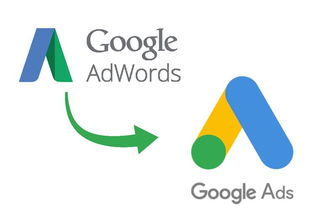Understanding Google Ads: A Comprehensive Guide

Google Ads, previously known as Google AdWords, is a powerful online advertising platform that allows businesses to promote their products and services across Google’s vast network. With over 90% of global internet users and billions of searches daily, Google Ads offers a unique opportunity to reach a vast audience. Whether you’re a small business owner or a large corporation, this guide will help you navigate the ins and outs of Google Ads.
Types of Google Ads

Google Ads offers various ad types to cater to different marketing goals. Here are some of the most common ones:
| Ad Type | Description |
|---|---|
| Search Ads | Appear on Google’s search engine results pages (SERPs) when users search for relevant keywords. |
| Display Ads | Are visual ads that appear on websites, apps, and YouTube videos across the Google Display Network (GDN). |
| Shopping Ads | Feature product images and information, and appear on Google’s search and shopping pages. |
| Video Ads | Are video ads that play on YouTube and other video platforms. |
| App Ads | Are designed to promote iOS or Android apps and appear on Google’s search, YouTube, and Google Play. |
Setting Up Your Google Ads Account

Before you can start running ads, you need to create a Google Ads account. Here’s a step-by-step guide to help you get started:
- Go to the Google Ads website and click on “Start now.” Sign in with your Google account.
- Choose your business type and industry.
- Set up your payment method and budget.
- Choose your target audience, location, and language.
- Create your first campaign and ad group.
Creating Your First Campaign
Once you’ve set up your account, it’s time to create your first campaign. Here’s what you need to do:
- Choose your campaign type, such as search, display, shopping, video, or app.
- Set your campaign goals, such as increasing website traffic, generating leads, or boosting sales.
- Choose your target audience, location, and language.
- Set your budget and bidding strategy.
- Create your ad groups and add keywords.
- Write your ad copy and create your ad extensions.
Optimizing Your Google Ads Campaign
Once your campaign is live, it’s essential to monitor its performance and make adjustments as needed. Here are some tips for optimizing your Google Ads campaign:
- Analyze your campaign’s performance regularly.
- Use negative keywords to exclude irrelevant traffic.
- Adjust your bids based on the performance of your keywords.
- Split test different ad variations to see which performs best.
- Use ad extensions to provide additional information to potential customers.
Measuring the Success of Your Google Ads Campaign
Measuring the success of your Google Ads campaign is crucial to understanding its impact on your business. Here are some key metrics to track:
- Click-through rate (CTR): The percentage of people who clicked on your ad after seeing it.
- Conversion rate: The percentage of people who completed a desired action, such as making a purchase or filling out a form.
- Cost per click (CPC): The average amount you pay each time someone clicks on your ad.
- Budget: The total amount you’ve allocated for your campaign.
Conclusion
Google Ads is a powerful tool for businesses looking to reach a global audience. By understanding the different ad types, setting up your account, creating campaigns, and optimizing your ads, you can effectively promote your products and services and achieve your marketing goals.




